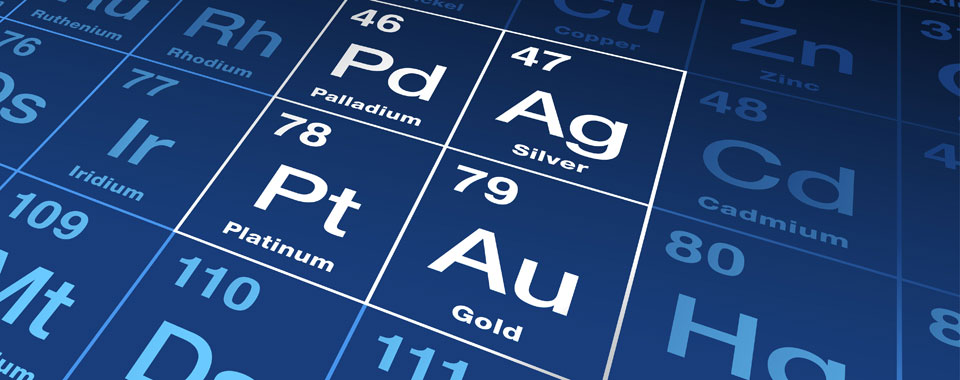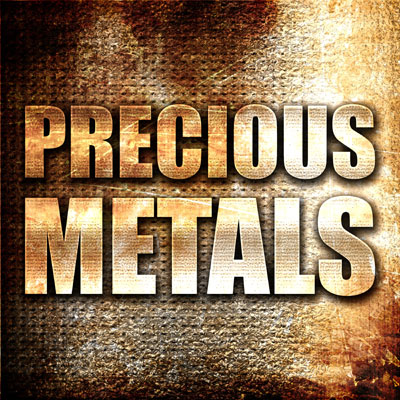
Why do portfolio investors typically spread risk across different asset classes like stocks and commodities?
 Bullion.Directory 7 May, 2021
Bullion.Directory 7 May, 2021
By Alison Macdonald
Commercial Editor at Bullion.Directory
This is the most basic form of building a diversified portfolio, with investor’s aim being to minimize risk and maximize gains.
If you’re looking to do this, then you’re probably considering investing in precious metals – a proven diversification tool and wealth-preserving asset.
Gold in particular is regarded as a safe investment especially during periods of economic uncertainty, as precious metals are proven market hedges, typically rising in value as other assets drop. In the crash of 2008 when stocks tumbled 50% and more, gold rocketed to a record high.
Similarly during the Coronavirus pandemic, gold once again rose to an all-time high price, with many experts predicting a climb higher still as the financial repercussions of a global shut down take a more full effect when central banks cease their interventions.
But investing in precious metals can be a huge challenge if you have no idea where to start due to a lack of relevant knowledge or experience. If you’re in such a position, worry no more as here’s a guide highlighting some important information to help you in your journey to investing in precious metals.
What Are Different Types Of Precious Metals?
Before deciding which precious metals and gems to buy, it’s important you first assess their volatility, demand and prices.
Knowing this will help you make a prudent decision about which of these metals is the right investment. Here’s a look at the precious metals you should consider when searching for precious metals & gems in Kansas City or further afield.
#1 Gold
 Undoubtedly the most in-demand precious metal is gold. One of the original forms of money, gold has been seen as precious since the dawn of civilization, preserving generational wealth and the wealth of nations for thousands of years.
Undoubtedly the most in-demand precious metal is gold. One of the original forms of money, gold has been seen as precious since the dawn of civilization, preserving generational wealth and the wealth of nations for thousands of years.
This shouldn’t be surprising considering its almost mystical characteristics. Gold’s breathtaking beauty and shine never tarnish, it’s surprising weight can be mesmerizing to hold in the hand – and then it’s practical aspects such as malleability, durability and it’s ability to conduct electricity and heat have made it all the more valuable. Although gold is used primarily as jewelry, it has been in use as coins for millennia, and has more recently seen extensive industrial use in electronics and surgical use in implants and dentistry.
Gold’s value has risen consistently over time averaging a 7% annual increase over the past 45 years, meaning it can be a useful tool to guard against inflation.
It’s market value is based on a “spot price” although in the real world gold is rarely bought or sold at this price, with physical gold always carrying a premium. This premium varies depending on the item of gold concerned with jewellery and smaller investment-grade coins and bars having a far greater premium than the large bars held by nations and central banks.
Spot price can be turbulent in the short term as it is based on market sentiment and the trading of paper derivatives, rather than physical demand for the metal.
In the long term and mid term however, gold is a consistently strong performer and very useful hedge against stock market volatility.
#2 Silver
 While less valuable than gold per weight, silver is also considered one of the best precious metals to buy as an investment.
While less valuable than gold per weight, silver is also considered one of the best precious metals to buy as an investment.
As well as it’s monetary and investment use, silver is an industrial metal with various and increasing uses in medicinal applications, electrical equipment, circuits, batteries, solar energy and other new environmentally friendly energy sources.
It has far greater industrial use than gold and it’s due to this that it can be more prone to drastic price changes. This volatility makes silver a better metal for taking quick profits than it’s longer-term cousin gold.
Silver is also a market hedge and in the crash of 2008 and it’s aftermath, it’s initial drop due to industrial slowdown was soon overtaken by it’s use as a store of value with silver seeing an even better overall price rise than gold. Silver added a 448% profit to silver investor’s pockets between 2008-2011 whereas gold “only” managed a 166% gain from it’s 2008 low to 2011 high.
Like gold, silver sees an overall trend upwards averaging nearly 27% in average annual growth between 1920 and 2020, taking it’s price from 65 cents, to over $18.00 /oz.
#3 Platinum
 This precious metal is rarer than gold and has traditionally been more highly valued, trading at a higher price than gold.
This precious metal is rarer than gold and has traditionally been more highly valued, trading at a higher price than gold.
This traditional premium over gold shifted in recent years falling far below the price of gold – and it is now considered by many to be undervalued and due a significant rise in the future.
It’s predominantly used in manufacturing automotive catalytic converter, chemical refining, computer industry, and ornamental purposes.
Some of the features of this metal include being very resistant to heat, hence why its demand in the industrial sector is exceedingly high.
#4 Palladium
 While it isn’t quite as popular as the aforementioned precious metals, palladium is also a great option to consider.
While it isn’t quite as popular as the aforementioned precious metals, palladium is also a great option to consider.
It has some similarities to platinum and is used in the manufacture of ceramic capacitors and engines and making jewelry. The demand for palladium among investors has soared as it’s a far rarer element than gold.
This rarity means it’s typically harder to buy than gold with only a few bullion manufacturers making palladium coins or bars.
What Are The Different Ways Of Investing In Precious Metals?
Now that you know the different types of precious metals, the next question must be how to get hold of these commodities.
Here are some of the ways you can invest in precious metals;
- Physical Ownership
It’s a great way of buying precious metals as it easily available either from Bullion dealers and online stores that can deliver right to your home, or store the metal in a secure depository. Having the precious physical metal gives you the freedom entirely to choose what to do with it. Home storage of bullion can be outside of many home insurance policies, so check with your insurer and always invest in a quality safe. - Common Stocks And Mutual Funds
Investing directly in precious metals is not as common as investing in gold-based or gold backed assets. As an example buying stocks in gold miners or refineries offers a way to profit from gold’s price rises without the theft risk of holding physical. - Exchange-Traded Funds
If you want a liquid and convenient way of buying precious metals such as silver, gold, and platinum, you can consider ETFs. ETFs are typically backed by gold (but not always) so check how much gold any partucvlar ETF owns. ETFs are infamous within the market as selling hundreds of times more ounces of gold than exist in the world. - Futures And Options
This is a viable investment method if you’re betting on the future price movement of precious metals. It can offer leveraged investing meaning you buy a stake in a bigger slice of the metals market than the dollar value of your investment. If markets rise you make a greater value than if you owned physical – but if they drop, you may lose not only your investment but end up owing the exchange further money. Yes you have the biggest potential for profit but coupled with increased volatility and the danger of losing more money than you put in makes these a far less enticing option for new investors in precious metals.
Takeaway
 If you’re looking for a way to protect yourself from risks associated with the financial system, then investing in precious metals is seen as a sensible move to make.
If you’re looking for a way to protect yourself from risks associated with the financial system, then investing in precious metals is seen as a sensible move to make.
Prices can be volatile but over time gold and other metals will typically rise and as market hedges, gold and silver are useful tools to protect your wealth.
Gold derivatives and funds may look appealing but they can be riskier investments overall either due to not being backed by any physical metals or because you can lose more money than your actual investment











 Material provided on the Bullion.Directory website is strictly for informational purposes only. The content is developed from sources believed to be providing accurate information. No information on this website is intended as investment, tax or legal advice and must not be relied upon as such. Please consult legal or tax professionals for specific information regarding your individual situation. Precious metals carry risk and investors requiring advice should always consult a properly qualified advisor. Bullion.Directory, it's staff or affiliates do not accept any liability for loss, damages, or loss of profit resulting from readers investment decisions.
Material provided on the Bullion.Directory website is strictly for informational purposes only. The content is developed from sources believed to be providing accurate information. No information on this website is intended as investment, tax or legal advice and must not be relied upon as such. Please consult legal or tax professionals for specific information regarding your individual situation. Precious metals carry risk and investors requiring advice should always consult a properly qualified advisor. Bullion.Directory, it's staff or affiliates do not accept any liability for loss, damages, or loss of profit resulting from readers investment decisions.

Leave a Reply